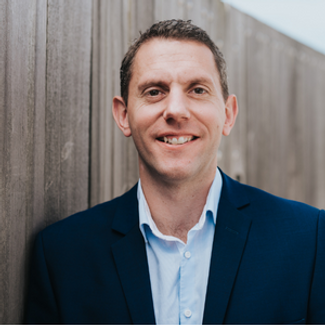The COVID-19 pandemic has unfortunately created some casualties in job losses. Understandably, more people have become anxious about their own job security and their long-term careers. RIBA has reported that 1 in 3 practices will be forced to make job cuts from the effects of this crisis.
If you are currently concerned about your job security and are looking for advice on what to do now, we have put together our top tips to help you through and get you prepared if the worst-case scenario should happen.
1. Start planning
When you are concerned about your job security, it can leave you feeling anxious and stressed. It can feel like the last thing you want to do is have to start planning for the future, but this is the best time to do it. Those who are the best prepared and can be responsive to a situation will be the first able to start applying for new jobs and have everything they need in place to be successful.
This might also include exploring options such as finding out whether your mortgage provider offers payment holidays and checking if you have the most competitive deals on your energy and media packages.
2. Work on your mindset
The thought of being made redundant can be devastating, not only from a financial point of view but also mentally. Don’t try and go this alone. If you are concerned, speak to your employer and speak with your friends and family. You may find speaking with your employer can ease your anxieties or help you prepare for what is to come.
Working on your mindset and being ready if the worst case scenario should happen will benefit you in the long term and enable you to respond better to a new situation.
3. Establish your personal and career goals
This can be a great opportunity to take a step back and think about your future and what you want from it. It is important to think about both your personal and career goals as these will need to work hand in hand. If you want more time with your family but you want to work in a city that is a two-hour commute away, these aren’t going to align to make you happy.
The first step is to visualise the ‘big picture’ of how you want your future to be. Use this time to identify the long-term and large-scale goals that you would like to achieve. You can then start breaking this down into smaller goals to achieve over time to ultimately help you meet this final goal.
Remember, along the way, your final goal or ‘big picture’ might change, and this is fine. Life changes and identifying that you need to make changes to your final goal will put you in a better situation to achieve what you want.
Keep returning to your goals and think about them if you start to apply for jobs.
4. Dust off your CV
If you have been in your current job for a long period, it has probably been a long time since you looked at your CV. There are some really simple things to check and get right: Contact details – are they still correct? Experience – is this as up to date as it could be? Does your CV sell you and would a future employer want to interview you after reading it?
5. Perfect your portfolio
This can make the difference between getting an interview and not. Choose your best and most recent creative pieces and ensure it is your own work. Try to limit photography where possible. Clarifying your software experience helps the hiring manager know what you are capable of and how flexible your skills are. Remember this is a sample of your work so make sure your portfolio is no bigger than 7MB.
6. Set up or update your LinkedIn profile
If you aren’t on LinkedIn or haven’t updated your profile in a long time, now is the time to get online. The most important elements of your LinkedIn profile to update are your name, contact details, job title, about you, headline, location, education, and skills. Don’t forget to add a professional headshot too. Recruiters utilise LinkedIn to find top talent so this is a great opportunity to be found by businesses actively recruiting. Make sure your information matches up with your CV. If the worst-case scenario does happen and you are made redundant, you can also switch on your profile to tell people you are looking for opportunities.
7. Build your network
Now that you have set up or updated your LinkedIn profile, start connecting. Utilising this time to build your network can really pay off if you are in a position where you need to find a new role. Right now, the LinkedIn community is very active in trying to match businesses that are recruiting individuals who are looking for work. Don’t be afraid to ask connections for help.
8. Reach out to recruiters
Start registering with some trusted recruitment agencies. Recruiters can be your greatest ally as they will not only help you find a job but also find you a job that is best suited to your personality, experience and qualifications. They can also save you time. They can source opportunities for you and will know who is hiring and who to contact.
We'd love to hear from you, so please do get in touch here.
9. Keep current
Use this time to make yourself even more employable. Why not invest some time in yourself by upgrading your skills and knowledge? Consider some training courses and stay current on what is happening in the industry. This will keep your knowledge fresh and will also give you some great sound bytes for future interviews.
10. Research video interview techniques
Certainly, for the short term, most job interviews will take place via video. Preparing yourself for this type of interview will put you ahead of the rest. You can read our full guide to video interviews here.
For many people, living with job insecurity is a new reality, especially amid the pandemic. This insecurity does not have to be negative and it can be a great opportunity for growth and development. Reduce stress by preparing yourself for change and invest time in keeping your skills up-to-date and in learning new ones.
Stay safe and good luck.
Join the conversation with FRAME Recruitment
Follow FRAME Recruitment on LinkedIn, Facebook and Twitter for the very latest news, updates, exclusive insights and regular hot jobs in the architecture and interior design sectors.







